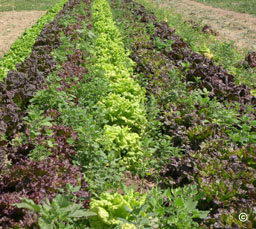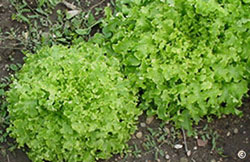Leafy vegetables are easy to grow. They contain more vitamins and minerals and less calories than any other vegetables. Most grow well under cool conditions and can be eaten at any stage of maturity, which makes them ideal for regions with a short growing season. Leafy vegetables can be harvested whenever there’s enough of the vegetable to make it worthwhile. For example, pick cabbage when the head is firm. Baby spinach baby lettuce is more tender and mild in flavor. Cool season leaf crops include beet greens, cabbage, celery, green onions, lettuce, mustard greens, parsley, spinach and turnip greens.
What is a leafy vegetable?
Salad greens and cooked greens are leafy vegetables. Not all leafy vegetables are green and may be both a salad green and a cooked green. For instance, chard, beet greens, kale, and collard greens can be eaten as salad greens or as cooked greens. Leafy vegetables that are generally eaten uncooked in salads include lettuce, celery, endive, dandelion greens and parsley.
When should I plant leafy vegetables?

Lettuce and endive are planted in April and again in late July. Celery should be transplanted in mid-June to mid-July, when plants are about 10 weeks old. Some people plant dandelions for greens and harvest the young leaves in the spring and fall. Parsley (both flat and curly leaf) is a cool-season crop and grows best in the spring and fall.
 Cooked greens include spinach, which is planted as a spring crop in April and a fall crop in August. True spinach begins to flower in warm weather, although some varieties are slower than others. New Zealand spinach is not a true spinach, but it tolerates hot weather better than spinach.
Cooked greens include spinach, which is planted as a spring crop in April and a fall crop in August. True spinach begins to flower in warm weather, although some varieties are slower than others. New Zealand spinach is not a true spinach, but it tolerates hot weather better than spinach.
Chard, also known as Swiss chard, is heat-tolerant and produces greens from July to October.
For more information, see the following Planttalk Colorado™ script(s):



